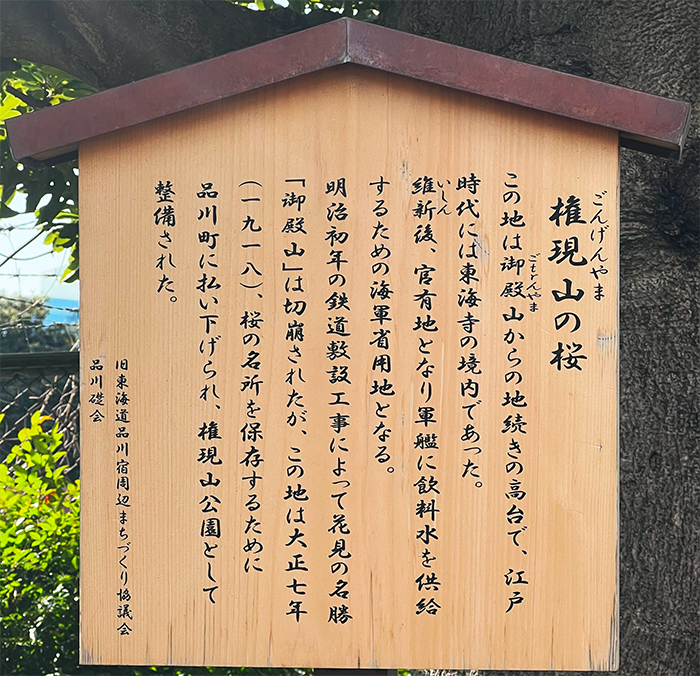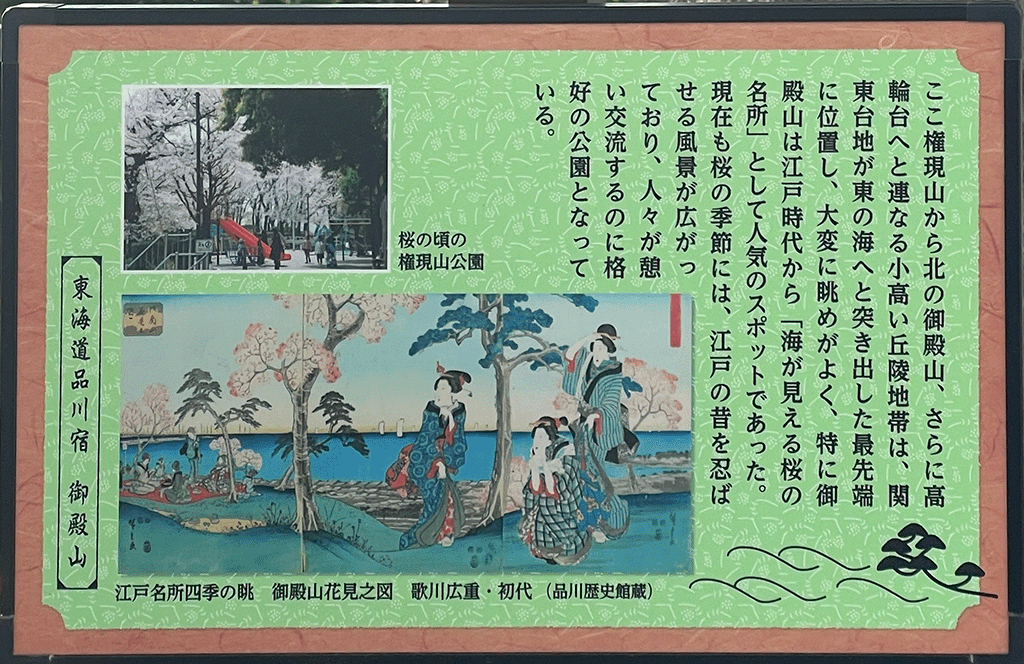Gongenyama Park – The Ghost of a God Mountain
Gongenyama Park may be small, but it carries the shadow of giants. Long before it became a leafy playground, this hill was crowned by Gongensha Shrine and later the vast Buddhist temple complex of Tōkai-ji. Today, the trees still whisper of vanished halls and sacred rites. While few structures remain, the site’s layered past gives it depth — and a slightly mysterious air.
🌄 The Rise and Fall of Gongen Hill
Originally, the hill was home to Gongensha (権現社), a Shinto shrine established in the Kamakura period. The site gained prominence when Tenkai, the Buddhist monk who advised Tokugawa Iemitsu, founded Tōkai-ji Temple on this ground in 1639. Over time, the temple complex came to include a pagoda, bell tower, and lush gardens. Sadly, these structures were destroyed in the anti-Buddhist backlash of the Meiji era and later urban development. What remains is a gentle hilltop park with a history just below the surface.
Changing Gongenyama
This hill used to be a continuation of from Gotenyama on the opposite side of the railway tracks. Following the Meiji Restoration the land was aquired by the government and the Navy Ministry used it to supply drinking water to warships.
The construction of a railway in the early Meiji period divided the hill from Gotenyama. But, in 1918, Shinagawa Town bought the land to save the famous cherry blossoms and Gongenyama Park was established.

🌿 A Quiet Escape with Hidden Depth
Today, Gongenyama Park is best known to locals as a place for morning walks, kids at play, and quiet conversation under the trees. A long and narrow park located on a hill Gongenyama opposite another hill Gotenyama. The railway tracks leaving Shinagawa Station separate the two hills. It’s the location of a famous cherry blossom viewing spot during the Edo period. The park has two zones. A play zone with various recreation equipment and a forest zone centered on cherry blossom trees.
Yet, the park’s shape hints at its past: the hilltop plateau was once the temple’s sacred heart. If you follow the paths closely, you may notice the terrain shifts — slopes, rises, and stonework that feel more ancient than recreational. History lingers here. You just have to look for it.

The hilly area stretching from Mt. Gongen to Mt. Gotenyama in the north and further on to Takanawadai is located at the very tip of the Kanto Plateau where it juts out into the eastern sea, and offers excellent views. Gotenyama in particular has been a popular spot since the Edo period as a “famous cherry blossom spot with sea views.”
Even today, during cherry blossom season, the park is filled with scenery reminiscent of the Edo period, making it a great place for people to relax and socialize.
Where is it?
| what3words | ///solids.torches.mobile |
| latitude longitude | 35.6188471 139.7371191 |
| Nearest station(s) | Kitashinagawa, Shimbamba |
| Nearest public conveniences | In the park |
Show me a sign.

Nothing wrong with that. There, and legible.
Withervee says…
Like a few other Scenes within the Shinagawa districts the site of this park fell within the grounds of the former Tōkai-ji Temple. It’s a pleasant enough place. Quite quiet and shaded under the trees. You can look at JR trains, Tokaido Shinkansen and the Narita Express as it overlooks many tracks tracks coming south out of Shinagawa station. If you want to looks at trains you may get a better view from to the bridge to Gotenyama or from Gotenyama itself.
Site Character
- Lifestyle 生活 (Seikatsu): ✔️
- Historical Significance 歴史 (Rekishi): ✔️
- Atmosphere/Natural Features 風土 (Fūdo): ✔️
Who in their right mind would vote for this?
- Hilltop wanderers
- Temple history nerds
- Ghost story enjoyers
- Urban foragers
- Quiet park lovers
Further Info
Shinagawa Park Gongenyama
While you’re there…
Stop by Shinagawa Shrine for dragon springs and Fuji mounds, or head downhill to Kitashinagawa’s retro shopping street for a cold drink and Showa nostalgia.

